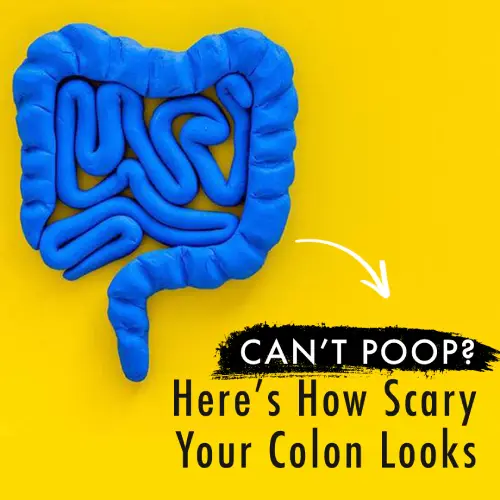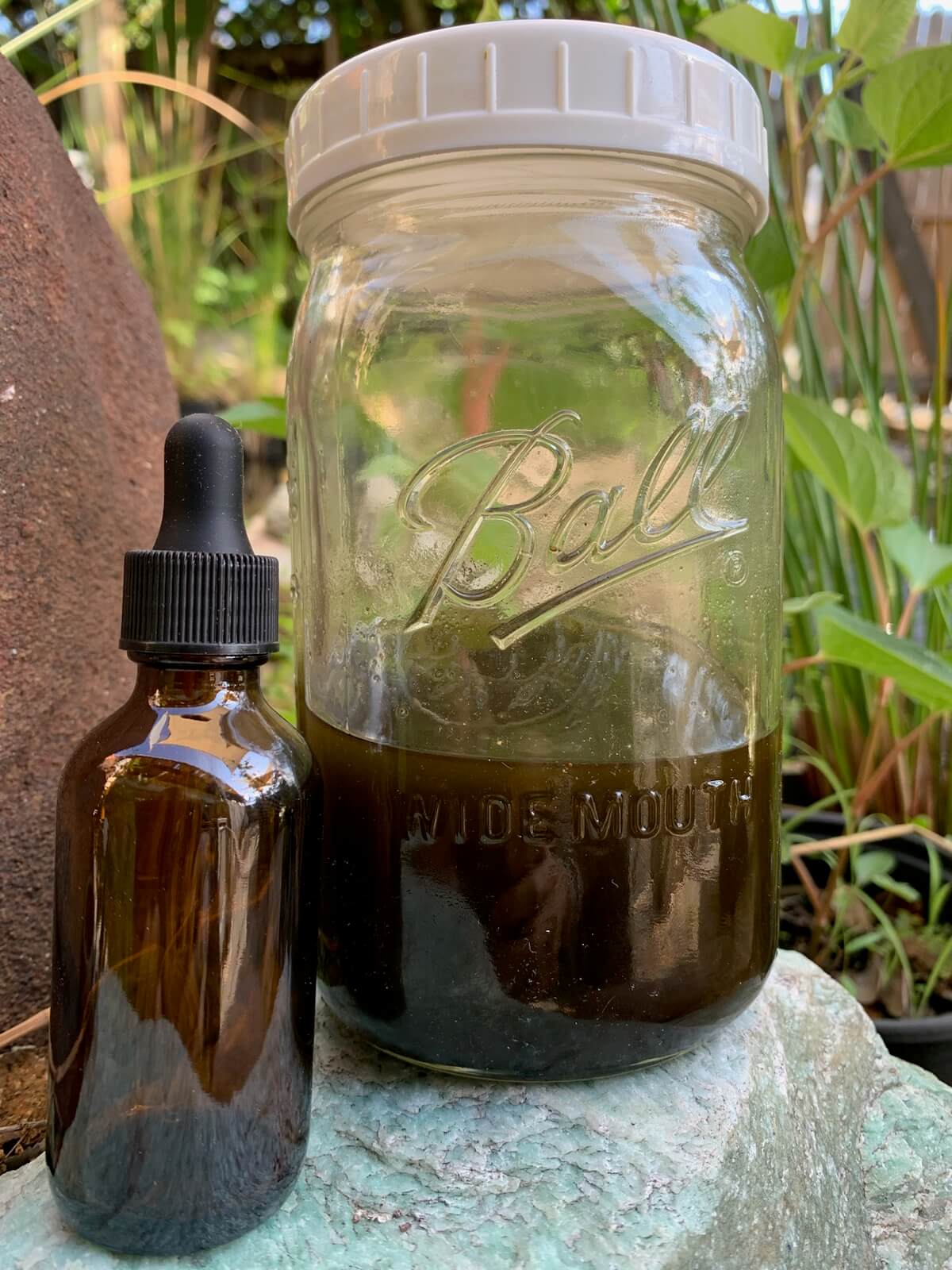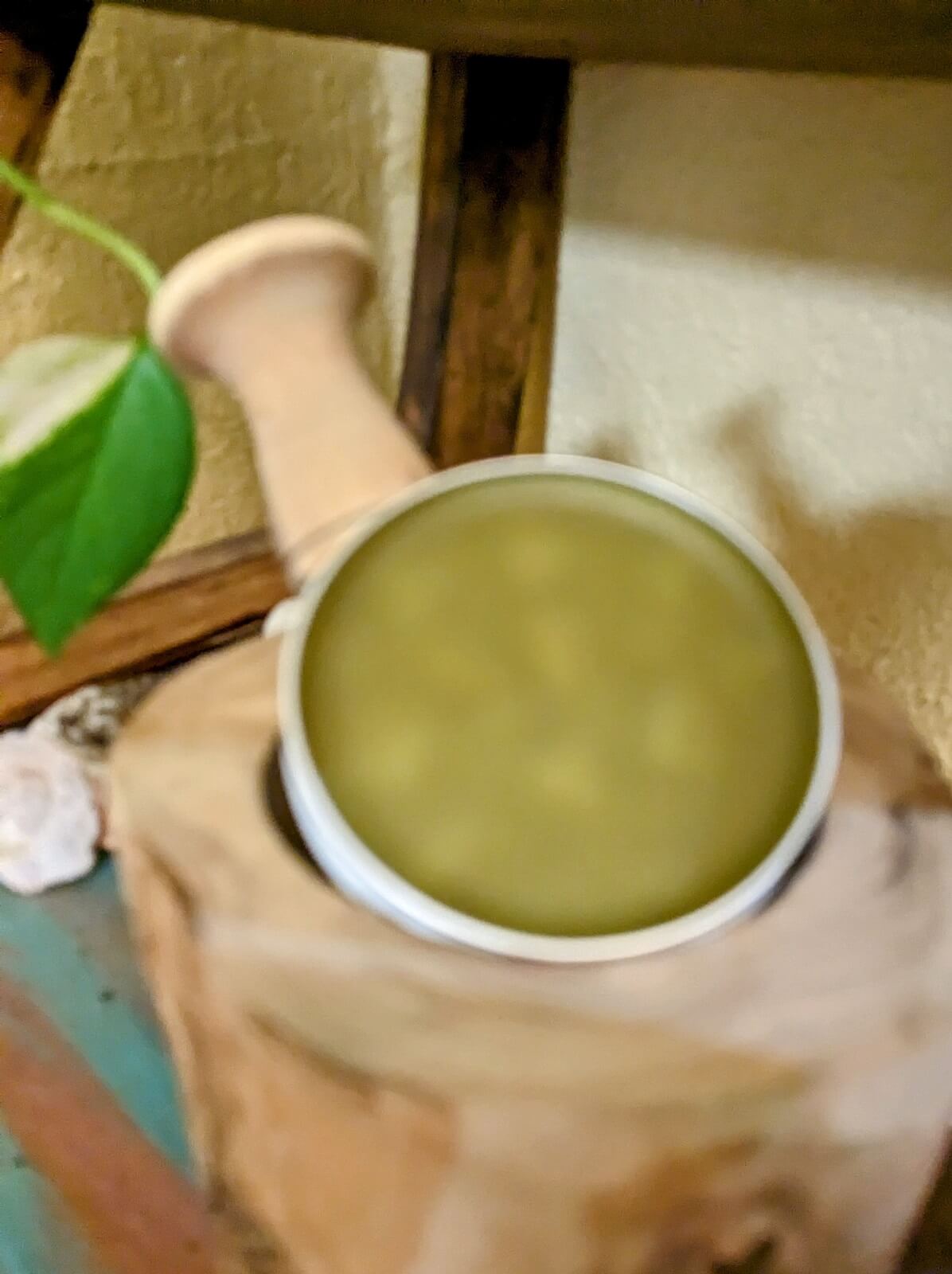
Hemorrhoids are a very common (but unspoken) problem for many adults. They can be painless and internal, or painful and bleeding. These pesky, inflamed blood vessels often start with irritation and itching around the anus. They are exacerbated by straining, and can become prolapsed and protruding.
Severe pain and fresh blood loss may ensue, especially on passing a bowel movement. Hemorrhoids frequently appear after childbirth, due to the pressure of pushing.(source 1) Much can be done to prevent or reduce hemorrhoids through the management of diet and lifestyle, and through the use of appropriate herbs.
Herbal support can be delivered both internally and topically. The recipes below are for a tincture to be used internally and a salve to be used externally on swollen, painful veins. The tincture is full of herbs that tonify blood vessels (such as Butcher’s Broom), heal connective tissues (for example, Gotu kola), and decrease blood stagnation (Horse Chestnut is a great example of this).
We’ll also be making a salve that is supportive and healing for external, bleeding hemorrhoids. We’ll use herbs that are anti-inflammatory (St. John’s Wort), tissue healing (Calendula), and styptic (Yarrow).
Naturally Treat Hemorrhoids in 48 Hours
Jessica Wright’s unique 5-step, all-natural approach to hemorrhoid treatment delivers permanent relief. Heal hemorrhoids in 48 hours, and eliminate the root cause in 30 to 60 days.
Benefit from Jessica’s 12 years of research; her book is backed by a 60 day, 100% money back guarantee.

General Hemorrhoid Treatment Guidlines
- Avoid tight clothing and activities that cause straining (including bowel movements).
- Use a foot stool to enhance a squatting position and promote ease of passing a bowel movement.(source 1)
- Sleep on the left side is encouraged to take the pressure off large veins.
- Exercise regularly (without straining) to improve blood flow.
Dietary Adjunct Therapies for Hemorrhoids
- Drink plenty of water.
- Eat a healthy, whole food diet, including plenty of green, leafy vegetables and foods high in Vit. A, C, E, and B Complex.
- Take in plenty of foods high in the bioflavonoid rutin to strengthen the venous walls. Examples include buckwheat, apples, figs, green tea, and Elderflower tea.
- The antioxidants in bright colored berries will all improve general blood vessel function.(source 1)
- Eat water-soluble fiber.
- Eat cold water fish or fish oils, legumes, and alfalfa.
- Include parsley and nettles in the diet to help the elasticity of veins.
- Include garlic and onion as circulatory tonics.
- Decrease coffee and caffeine intake.
About the Hemorrhoid Treatment Recipes
I used dried herbs for both of the formulas below. If fresh herbs were used, different ratios would have been necessary. Both preparations used a 1:5 ratio of dried herbs:liquid solvent. For these recipes, I used 100g dried herbs:500 ml solvent.
Please Note: The actual processing of tinctures or oils can take 6 weeks. If you are using an infusion machine, then it will take approximately 8 hours for the herbs to infuse.
Herbs were ground up, placed in an airtight glass jar, and stored in a dark place for 4-6 weeks. When making your own herbal preparations, don’t forget to agitate your jars on a daily basis!
Once your formulas are properly infused, you can strain using a metal strainer and muslin, or a tincture press with cheesecloth. I love using a tincture press, but these are big, bulky, and expensive. Don’t forget to label your formulas with the date, ingredients, and ratios!
Samuel Bart’s Digestive Health Solution
Samuel Bart has always been passionate about plants and their ability to keep us healthy. He has put together some of the best natural ways that could help anyone support a healthy digestive system.
Samuel perfected an easy, yet powerful formula, which consists of amazing ingredients. Bart’s supplement is backed by a ironclad 60-day, money back guarantee.

Happy Bottom Hemorrhoids Tincture
Prep Time: 30 Minutes
Yield: 11 ounces
Author: Ms. Tricia Perez, MS, CPT
The hemorrhoid support tincture below is a soothing internal herbal remedy for inflamed blood vessels. It is anti-inflammatory and pain-relieving, and it also reduces swelling, decreases congestion, tones, and enhances the connective tissue lining of blood vessels.
Additionally, these herbs will support the rectal blood vessels by toning them and easing their congestion. If the hemorrhoids are bleeding, there are some herbs included to constrict the blood vessels and stop the bleeding. Tinctures can taste unpleasant to some, so feel free to drop your dose into a small amount of water to dilute it!
Recipe Ingredients
- Gotu Kola (Centella asiatica) — 20 g
- Cinnamon (Cinnamomum, various species) — 10 g
- Butcher’s Broom (Ruscus aculeatus) — 15 g
- Horse Chestnut (Aesculus hippocastanum) — 15 g
- White Oak (Quercus alba) — 10 g (Bark)
- Hawthorne (Crataegus, various species) — 15 g (I used 8 g berry and 7 g leaf)
- Stone Root (Collinsonia canadensis) — 15 g
- Vodka (Ethanol) — 500 ml
Recipe Directions
- Grind all herbs in a coffee grinder until they are finely chopped.
- Combine the liquid solvent and marc (solvent and dried herbs) in a glass container with a sealed lid. (Canning jars work well for this).
- Store in a cool, dark place for approximately 6 weeks (if you are not using an infusion machine).
- Shake daily until ready to press.
- Press, using a tincture press or metal strainer and cloth.
- Bottle and label stock bottle and dropper bottle.
Dr. John Herzog (MD)
Dr. John Herzog, a "survival surgeon" from Maine explains what home remedies work best in a crisis situation.
This may be important in the event you require first-aid or are in an emergency situation without easy access to a hospital. Dr. John Herzog has assembled a large collection of home remedies for such scenarios.

Herbal Hemorrhoid Relief Salve
Prep Time: 2 hours and 30 minutes
Yield: 12.5 oz of salve
Author: Ms. Tricia Perez, MS, CPT
This hemorrhoid relief salve is a soothing external topical remedy. The chosen herbs are anti-microbial, pain-relieving, and anti-inflammatory. It will help with healing and toning of the veins, as well as stopping the bleeding of the hemorrhoids. These herbs were also chosen specifically because they accelerate tissue healing and stimulate tissue growth. It may be nice to use less beeswax than you normally do when you make salves, for a softer consistency on a very tender area.
Recipe Ingredients
- Comfrey (Symphytum officinale) — 15 g (Leaf)
- Witch Hazel (Hamamelis virginiana) — 20 g
- Calendula (Calendula officinalis) — 10 g
- Plantain (Plantago, various species) — 10 g
- Yarrow (Achillea millefolium) — 10 g
- White Oak (Quercus alba) — 15 g
- St. John’s Wort (Hypericum perforatum) — 20 g
- Organic Extra Virgin Olive Oil (Olea europea) — 500 ml
- Bee’s Wax — 1.25 ounces
- Frankincense (Boswellia sacra) — 1 drop in each tin
Recipe Directions
- Grind all herbs in a coffee grinder until they are finely chopped.
- Combine the liquid solvent and marc (solvent and dried herbs) in a glass container with a sealed lid. (Canning jars work well for this).
- Store in a cool, dark place for approximately 6 weeks.
- Shake daily until ready to press.
- Press, using a tincture press or metal strainer and cloth.
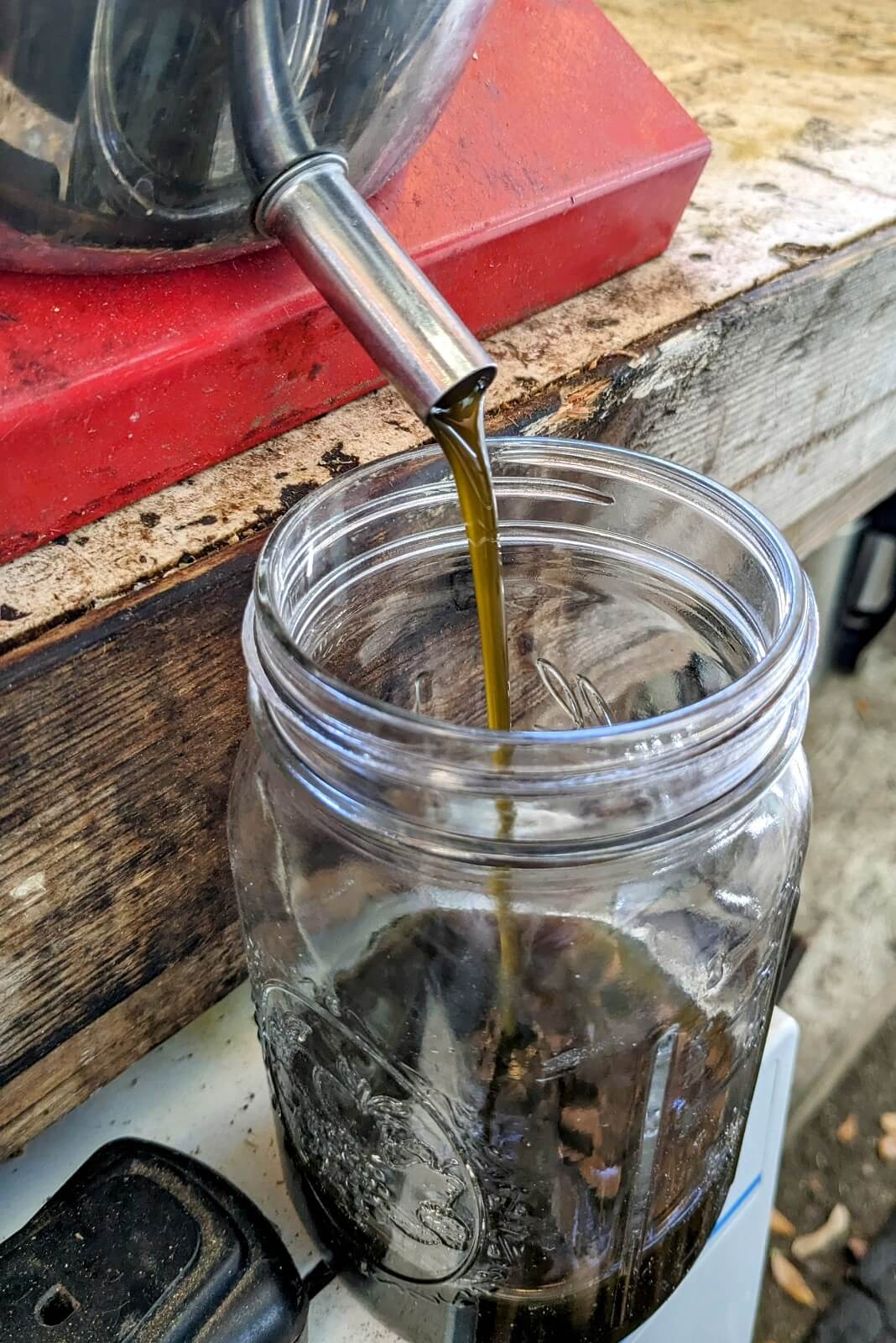
In a small crock pot, combine infused oil and beeswax.
This can be a messy process! I like to keep equipment just for oils and salves, because you may never get the crockpot fully clean again. I also like to stir my salve with a chopstick, to not ruin my silverware.
To make sure you have your desired texture, you can place the warm salve into the freezer for 30 seconds to assess its consistency. I feel that a softer salve is ideal for this tender area, but you can add more beeswax to get a thicker salve.
You may also want to consider the climate where you live when adding your beeswax - I live in a hotter, tropical climate, so I tend to add more beeswax to avoid it melting in our hotter weather.) A general rule of thumb is that 1 cup infused oil can be paired with 1 oz. beeswax.(source 2)
For this recipe, 1 oz beeswax would probably have sufficed, but I used 1.25 oz, knowing that it will soon be much warmer here in Florida

- Once you have achieved your desired consistency, pour your salve into your clean metal tins.

- Add one drop of Frankincense essential oil to each tin for preserving and extra skin soothing.
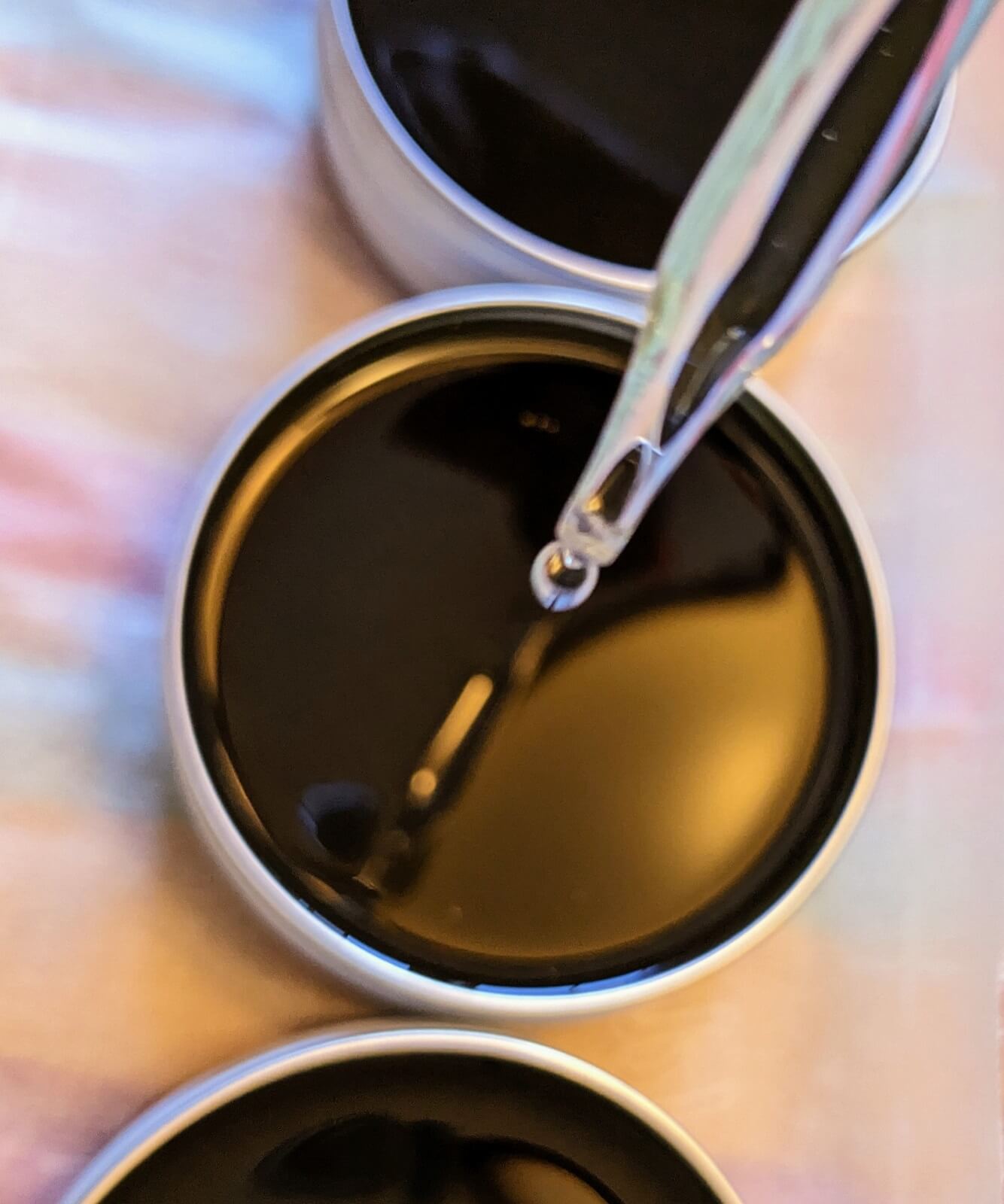
- Once the salves have cooled and hardened at room temperature, place lids and labels on them and store in a cool location out of sunlight.
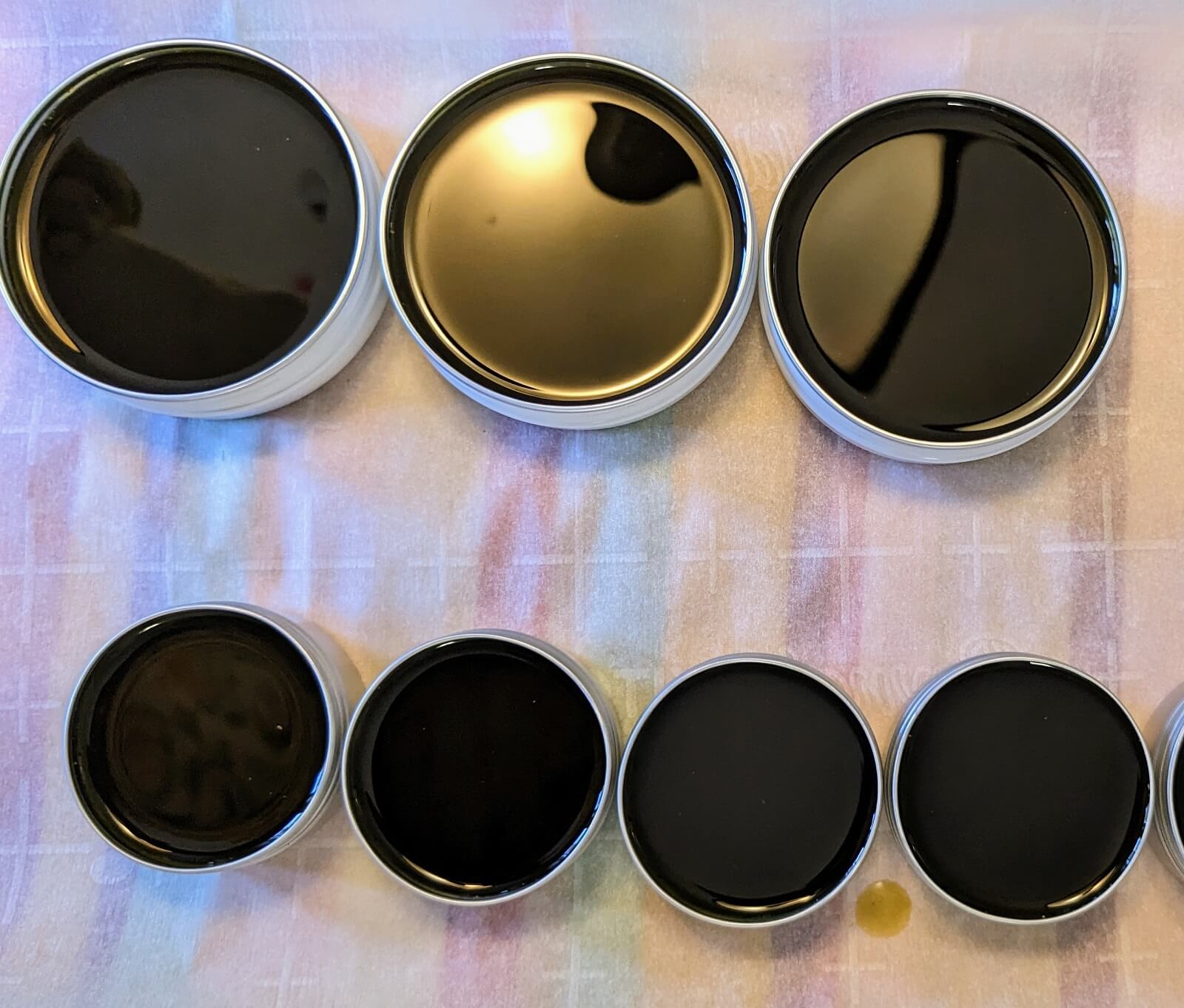
Claire Goodall’s Amazing Guide
Clair Goodall is a bee-obsessed, natural medicine convert from Minnesota (USA). And, she does keep bees!
Clair has created 350+ page book documenting how to replace the toxic products and medications in your home with healthier, all-natural alternatives.

Why I Chose These Herbs
To learn more about why I chose each herb, please read below:
Butcher’s Broom (Ruscus aculeatus) — The root acts upon the venous system, and is beneficial for varicosities, especially hemorrhoids. Butcher’s Broom is anti-inflammatory, vasoconstrictive, and anti-hemorrhagic. It reduces swelling of hemorrhoidal varices and has a tonic effect on the rectal blood vessels. It has been shown to increase the tone of the veins and increase the resistance of blood vessels.
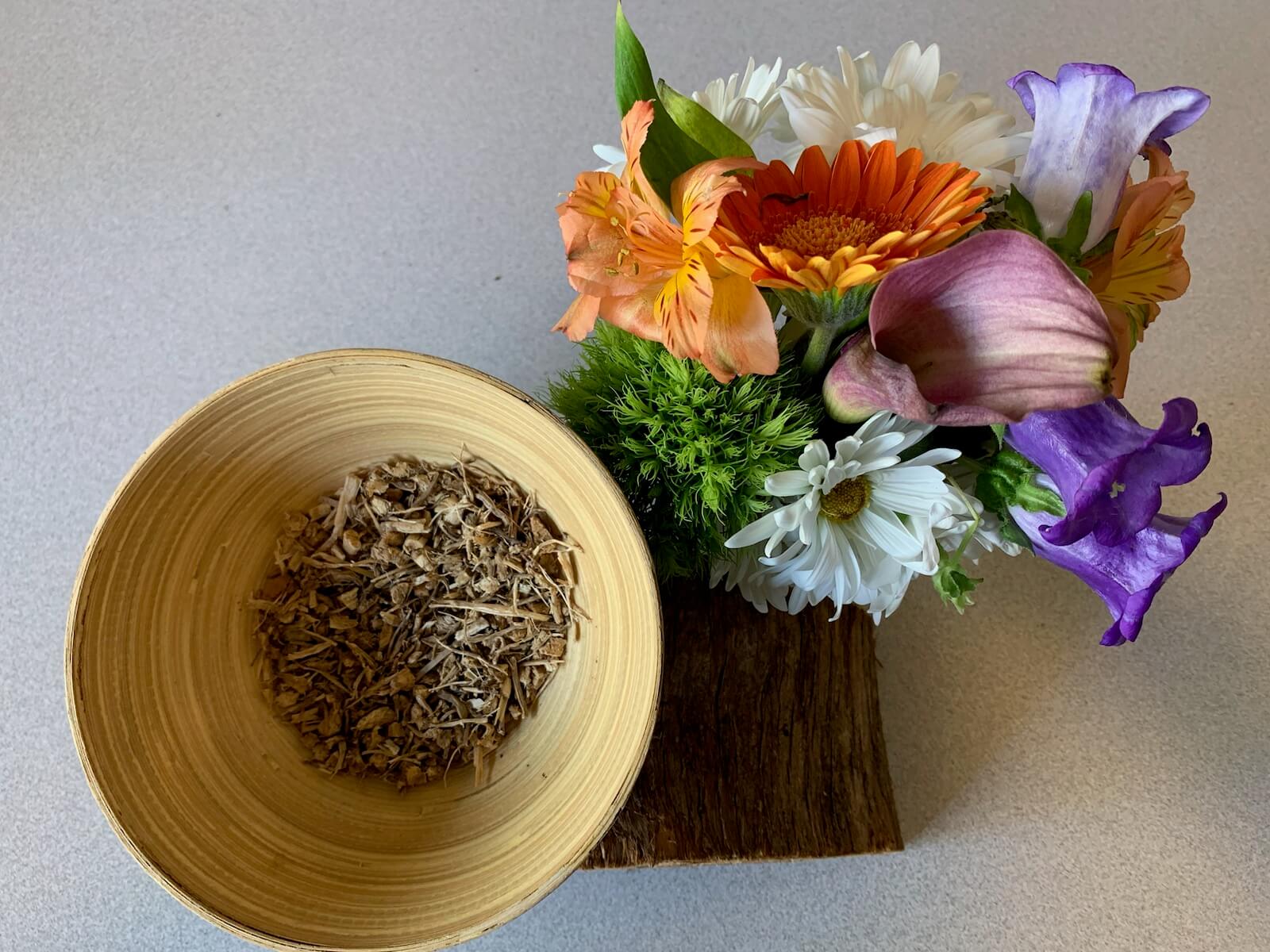
Calendula (Calendula officinalis) — These flowers are drying and anti-inflammatory. It is specific for wounds that will not heal and lymphatic congestion. Calendula is antiseptic, anti-hemorrhagic, and promotes healing. Calendula is contraindicated internally during pregnancy due to its possible emmenagogue and abortifacient effects.
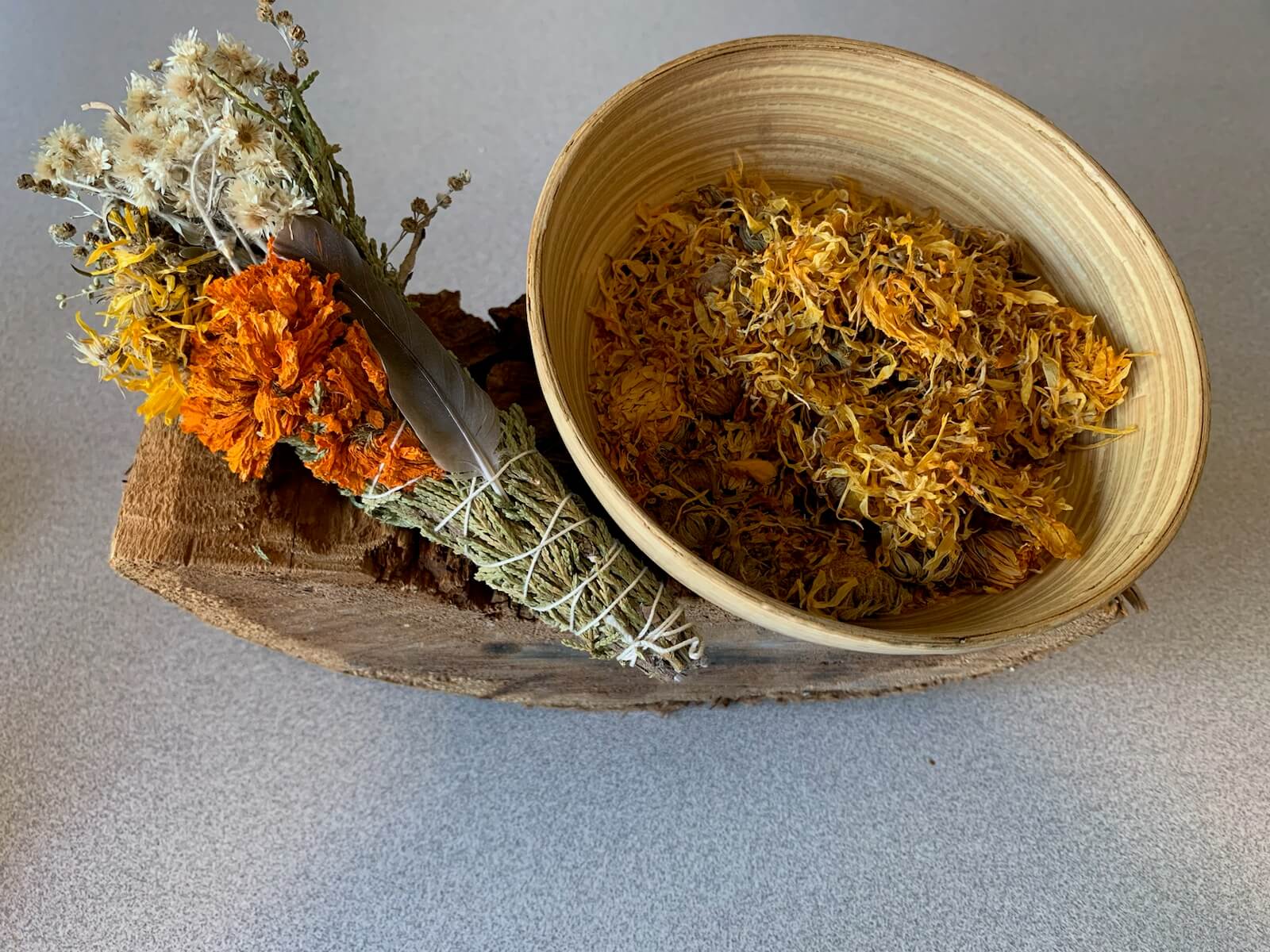
Cinnamon (Cinnamomum spp.) — The bark is astringent, antiseptic, and hemostatic. It decreases congealed masses like blood stagnation and edema. It is a warming herb that is also used as a flavoring. Caution: Do not use in large doses or for extended periods of time.
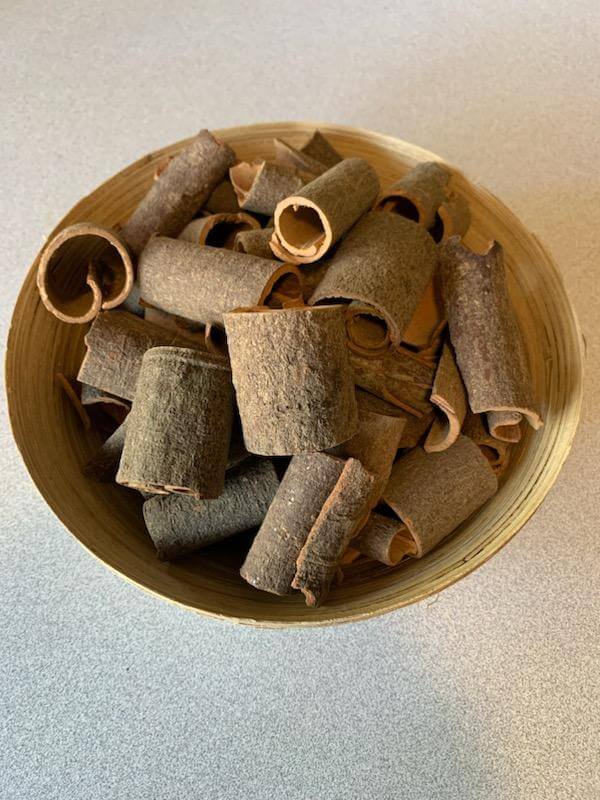
Comfrey (Symphytum officinalis) — It is anti-inflammatory and a mild analgesic. Comfrey hastens the healing process due to the constituent, allantoin, which enhances cell proliferation. It is very soothing and relieves the pain associated with hemorrhoids. Do not use Comfrey internally due to its pyrrolizidine content.
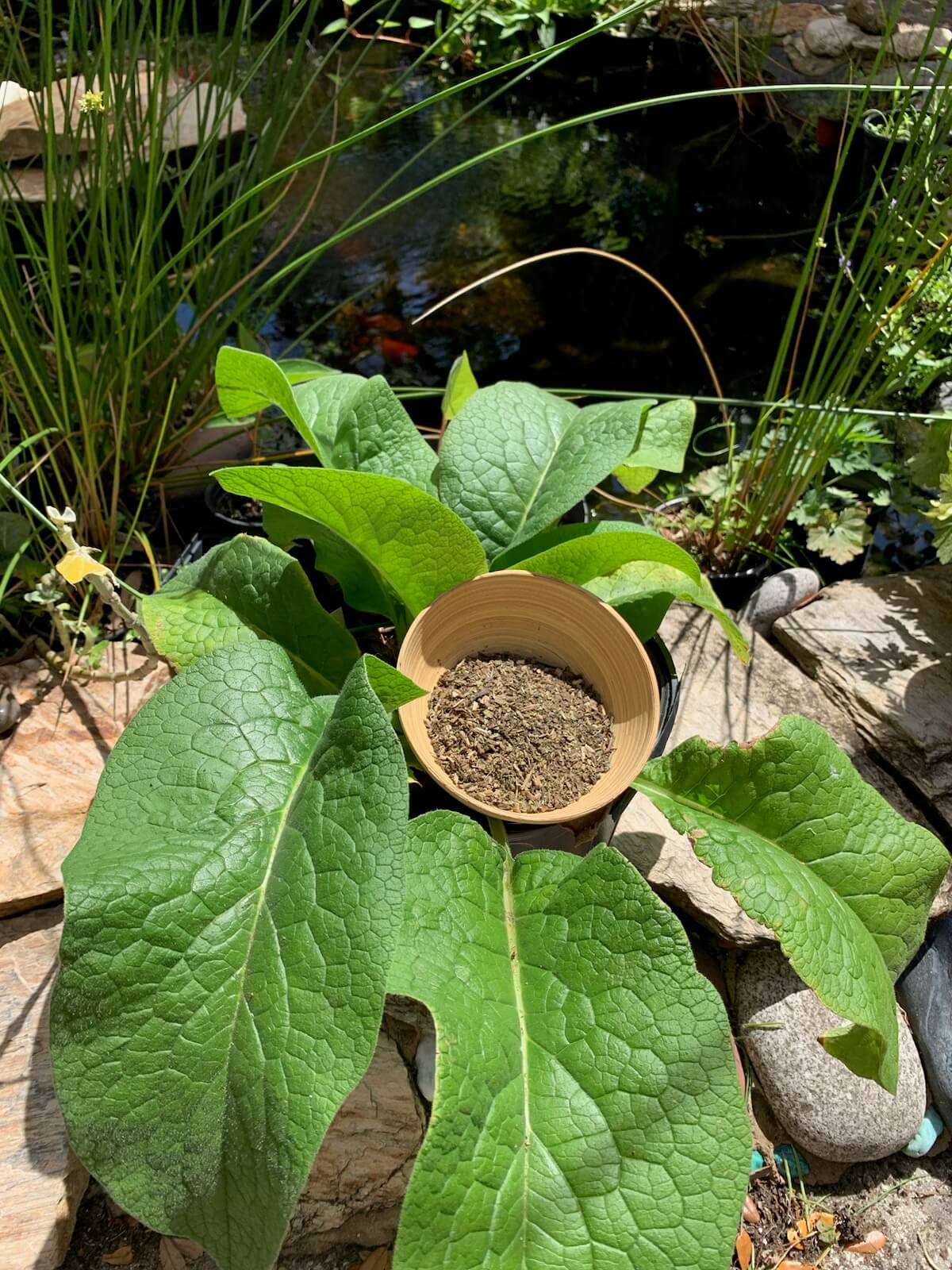
Gotu Kola (Centella asiatica) — This whole plant is cooling and is used to accelerate healing time for connective tissue. It is useful for any type of venous/arterial debility, and is used for prevention or treatment of varicose veins and hemorrhoids. It is contraindicated in pregnancy due to emmenagogue and abortifacient effects, unless under the guidance of a qualified health care practitioner.
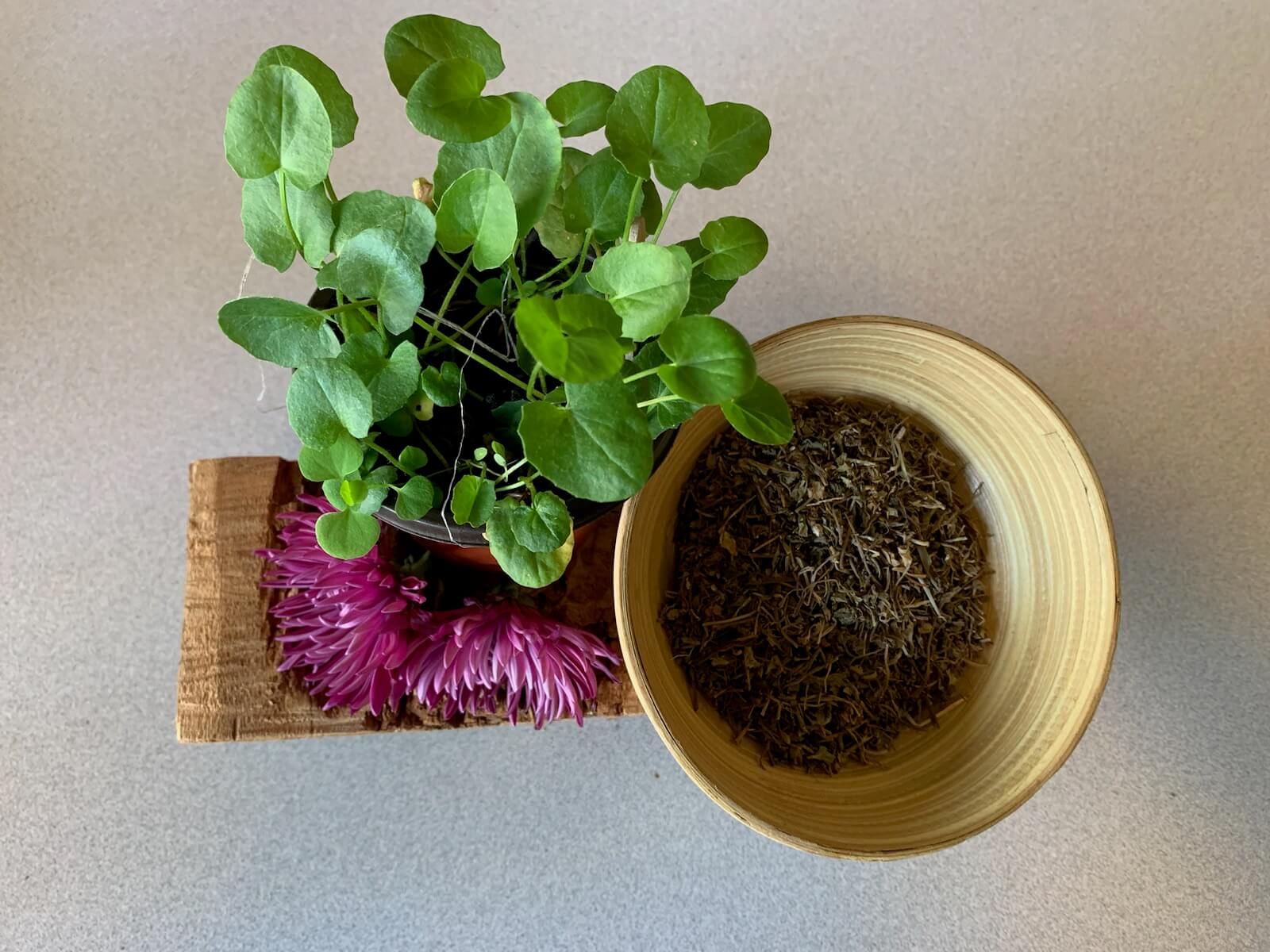
Hawthorn (Berry and Leaf) (Crataegus spp.) — Hawthorn decreases inflammation in the blood vessels. It helps maintain healthy arteries and veins by enhancing the connective tissue structure of the endothelial lining of the heart, blood, and lymphatic vessels. This gives these structures resiliency against injury, disease, and the normal wear and tear of aging. It improves cardiac function in general, and it is used for hemorrhoids due to its ability to decrease blood vessel inflammation.
Caution: Individuals who consume Hawthorn should have all heart medications monitored by a physician.
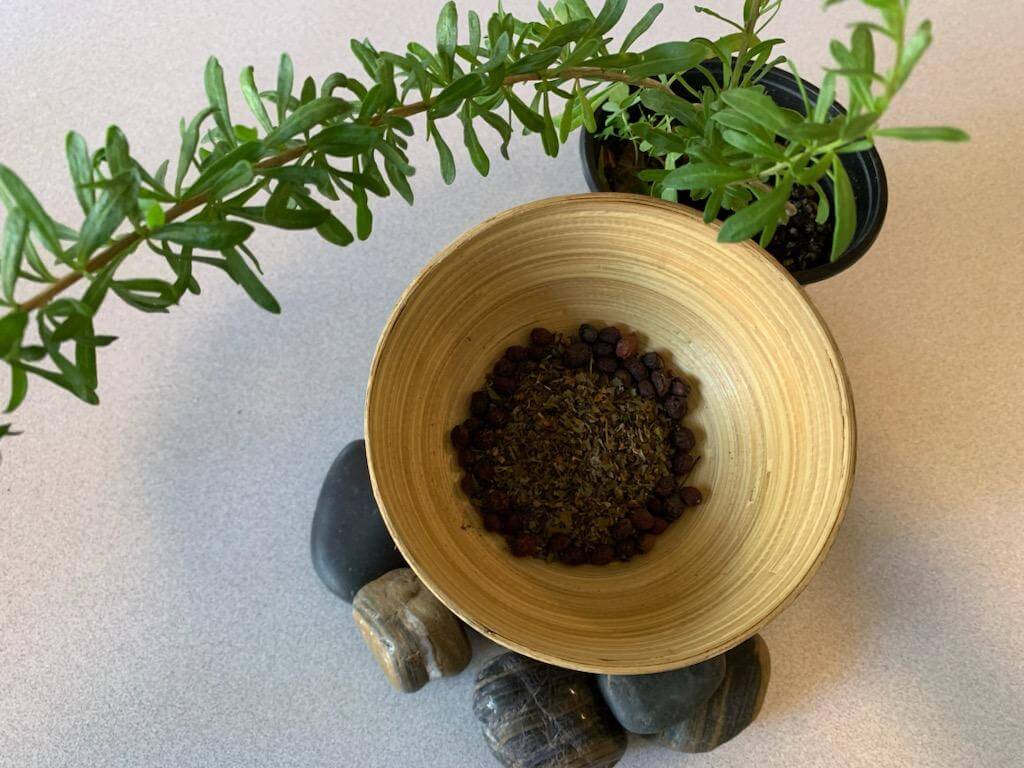
Horse Chestnut (Aesculus hippocastanum) — The seeds and bark are used for hemorrhoids that are due to portal vein obstruction. It improves vascular resistance and decreases capillary permeability. Horse chestnut and its active constituents have been used to improve chronic venous insufficiency, such as hemorrhoids.
Horse chestnut has been particularly effective for hemorrhoids in the young and active with little bleeding, or for a feeling of heaviness or congestion in the rectal area. It can be used internally and externally, and is safe and efficacious for both short and long-term treatment.
This herb is contraindicated during pregnancy, in children under age 4, in acute kidney inflammation and gastrointestinal ulcers. This herb should not be taken in high doses (because it can have somewhat of a narcotic effect), and should be used under the supervision of a qualified health care practitioner.
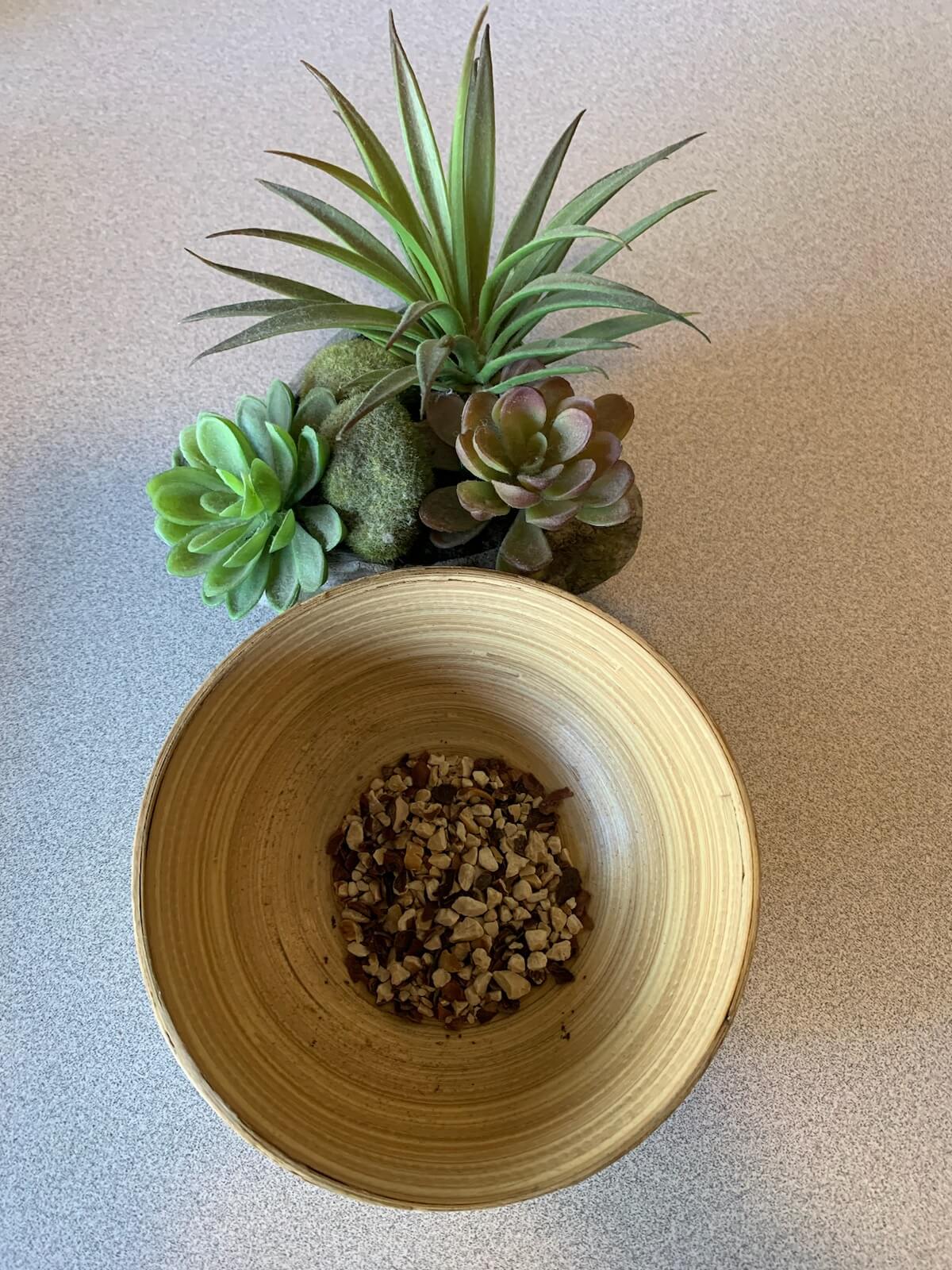
White Oak (Quercus alba) — White oak bark can be used internally or externally to help stop bleeding. It combines nicely with Plantain to draw a wound together for faster healing. Oak is an astringent herb that is beneficial for venous laxity and congestion like bleeding hemorrhoids and other varicosities.
*Due to the high tannin content, oak should be used internally for the short-term only, to avoid inhibiting digestion.
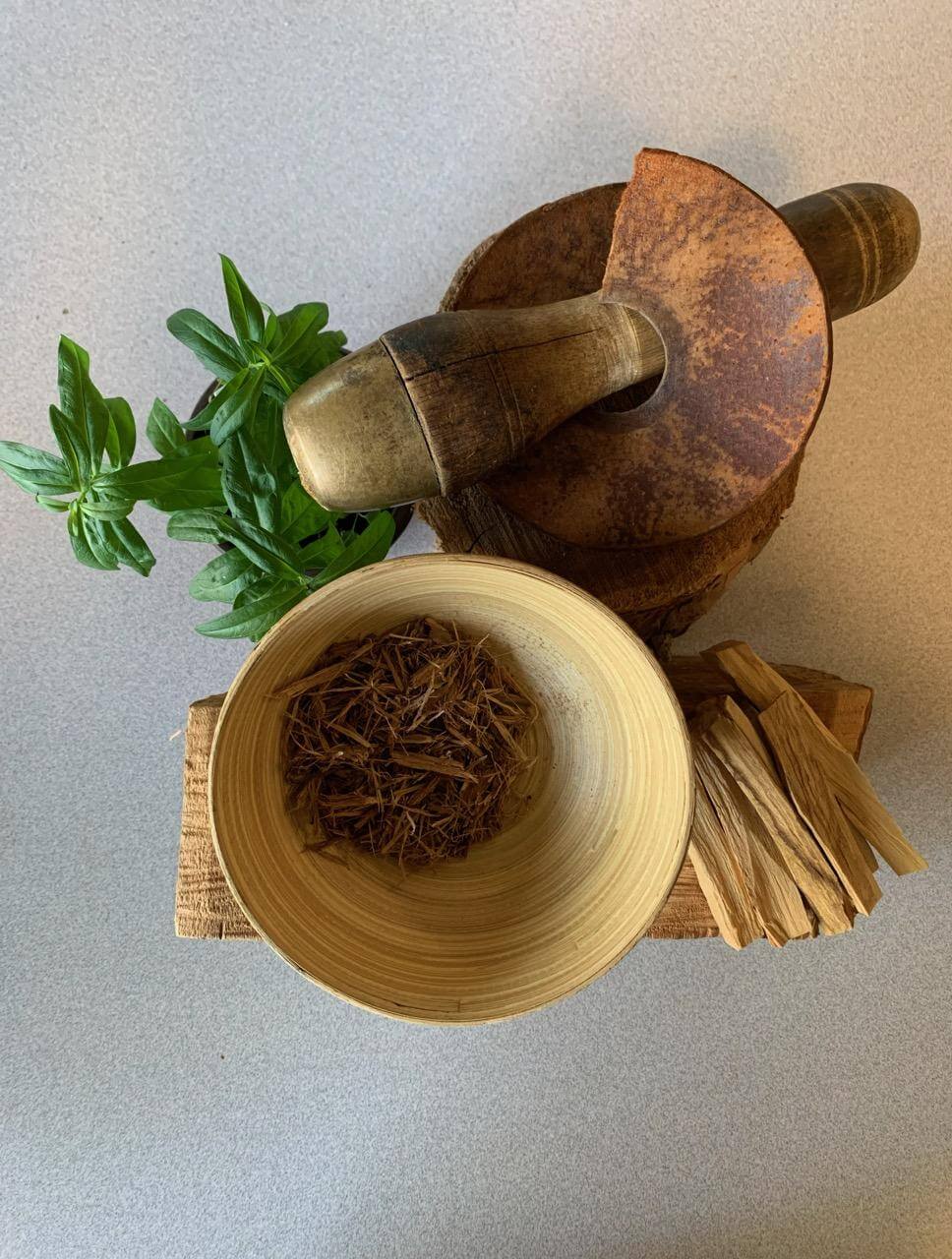
Plantain (Plantago spp.) — The leaves of Plantain are cooling, antiseptic, anti-inflammatory, and astringent. It is used topically for wounds, as it stimulates tissue growth.
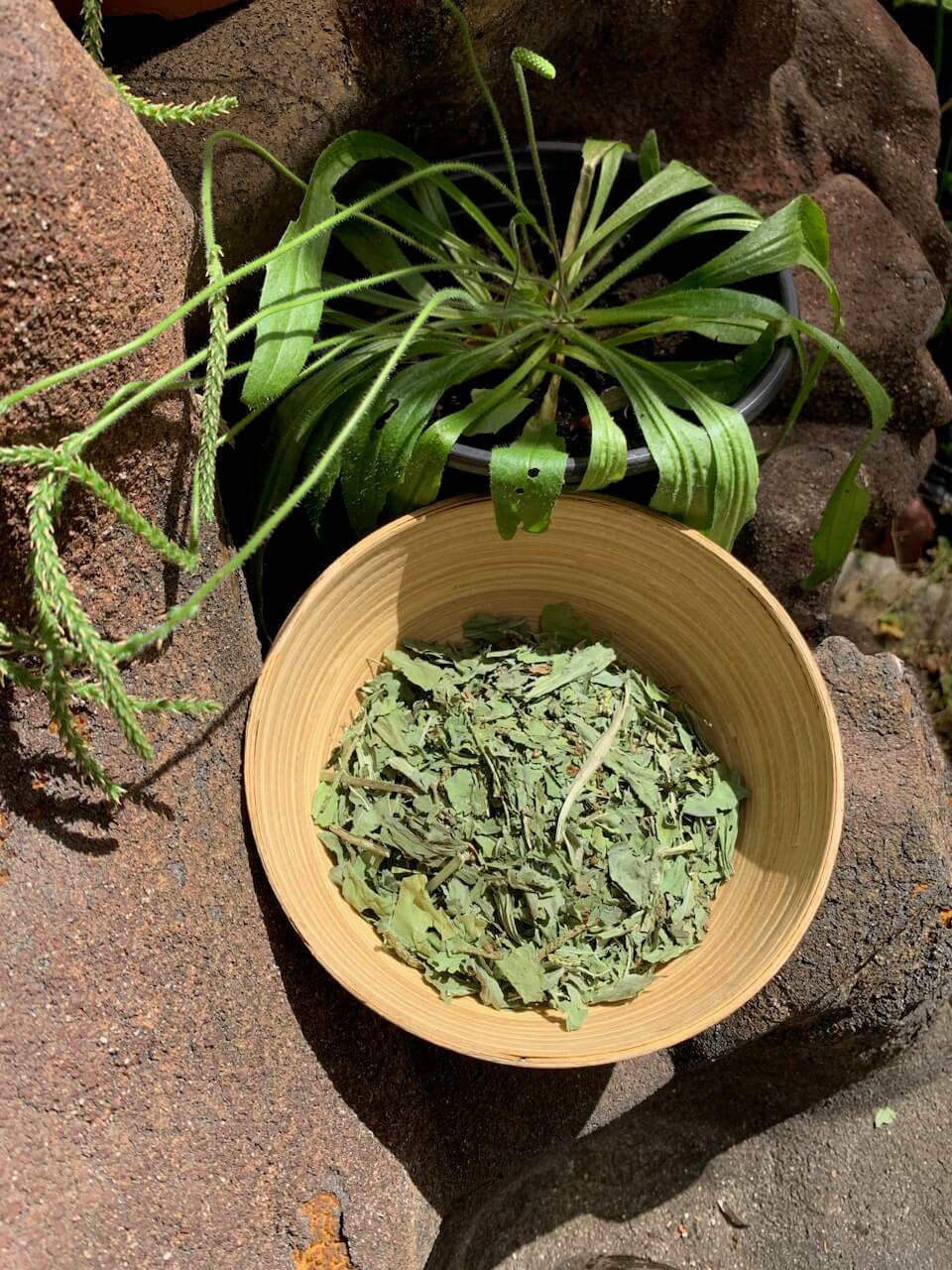
St. John’s Wort (Hypericum perforatum) — St. John’s Wort flowers are astringent and warming, and are indicated for painful hemorrhoids. This herb is soothing and healing to the veins due to its anti-inflammatory and capillary-strengthening activity. The oil can be applied as an external application, or the tincture can be taken internally.
St. John’s Wort is contraindicated during pregnancy due to the emmenagogue and abortifacient effects. It tends to interfere with many prescription drugs, so it should be avoided internally unless indicated by a qualified health care practitioner.
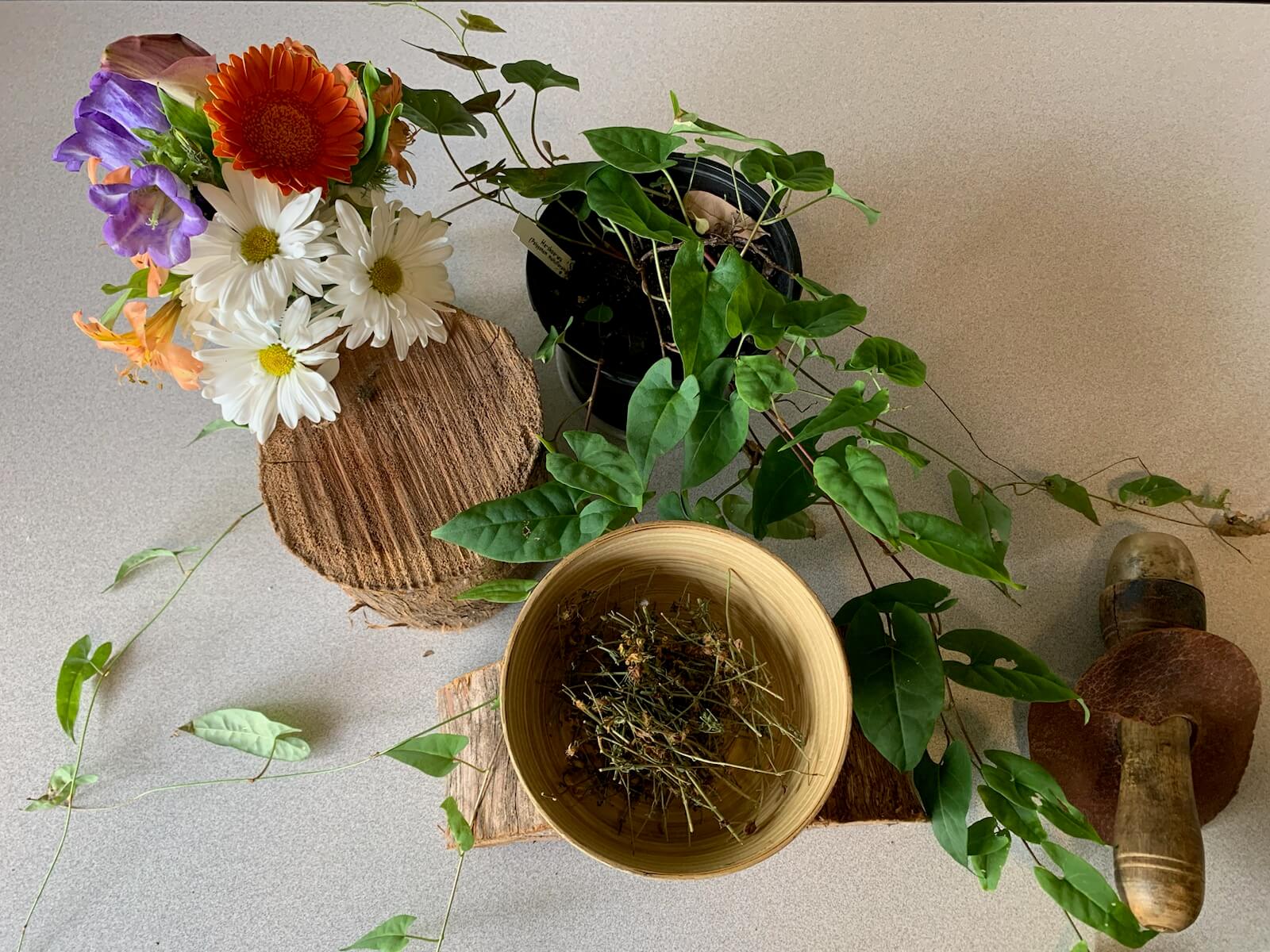
Stone Root (Collinsonia canadensis) — This whole plant is an excellent tonic herb for hemorrhoids and varicose veins. It is indicated for portal congestion that causes constipation and hemorrhoids. It works by opening up the portal vein (the vein which drains blood from the pelvic and abdominal areas and brings everything up to the liver for processing).
When the liver gets overwhelmed or the portal vein backs up, it can cause congestion of the fluids and blood in the pelvis, which often shows up as hemorrhoids and varicose veins. Stone root is especially useful for those with hemorrhoids who have hard, dry stools or alternating constipation and diarrhea.
*Some people have reported gastric irritation and emesis if taken in too large of an amount.
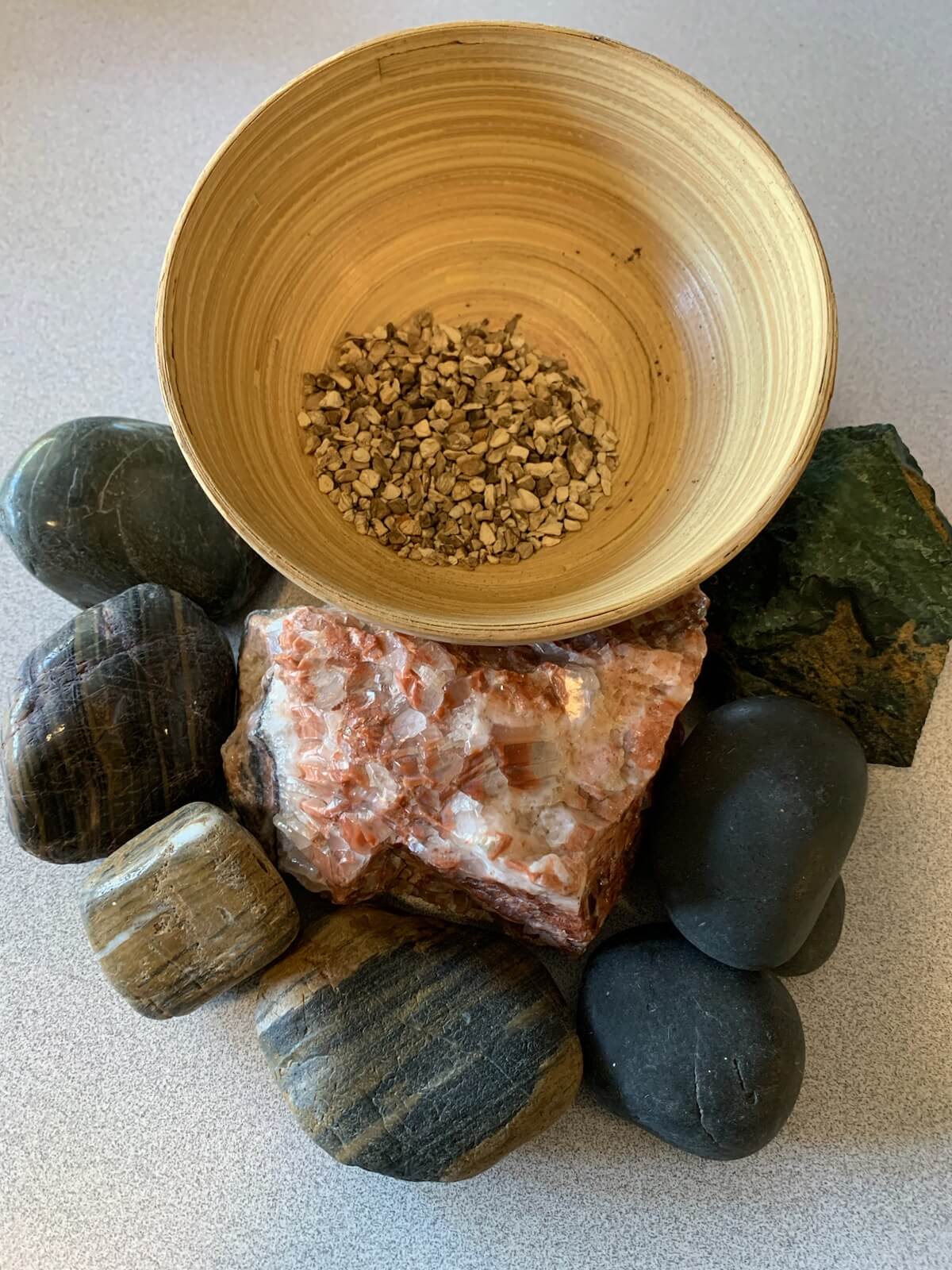
Witch Hazel (Hamamelis virginiana) — The leaves and twigs of witch hazel are astringent and tonic to the blood vessels. It is indicated for venous laxity and congestion, as seen with hemorrhoids and other varicosities.
Witch hazel increases blood vessel tone, making it useful with both pale, relaxed venous tissue as well as red, engorged tissues. It aids varicose veins and hemorrhoids and helps stop internal bleeding. It gently moves stuck blood with its aromatics while tightening up the tone of the blood vessels.
Witch hazel is particularly useful for improving the tissue tone of blood vessels, and for this reason, it is an excellent topical herb for hemorrhoids. Witch hazel is a prime remedy for the external treatment of varicosities, being an astringent vasoconstrictor that is antiseptic, anti-inflammatory, antioxidant, and anti-hemorrhagic.

Yarrow (Achillea millefolium) — Yarrow leaves are styptic, cooling, and drying. It is a bitter tonic with astringent properties to reduce varices, anti-inflammatory properties to decrease the inflamed vessels, analgesic properties to allay the pain, antimicrobial properties to decrease the risk of infection and styptic properties to address the bleeding varices.
It is best used for atonic or relaxed tissues, as in the case of bleeding hemorrhoids. It is contraindicated in pregnancy due to the emmenagogue and abortifacient effects.
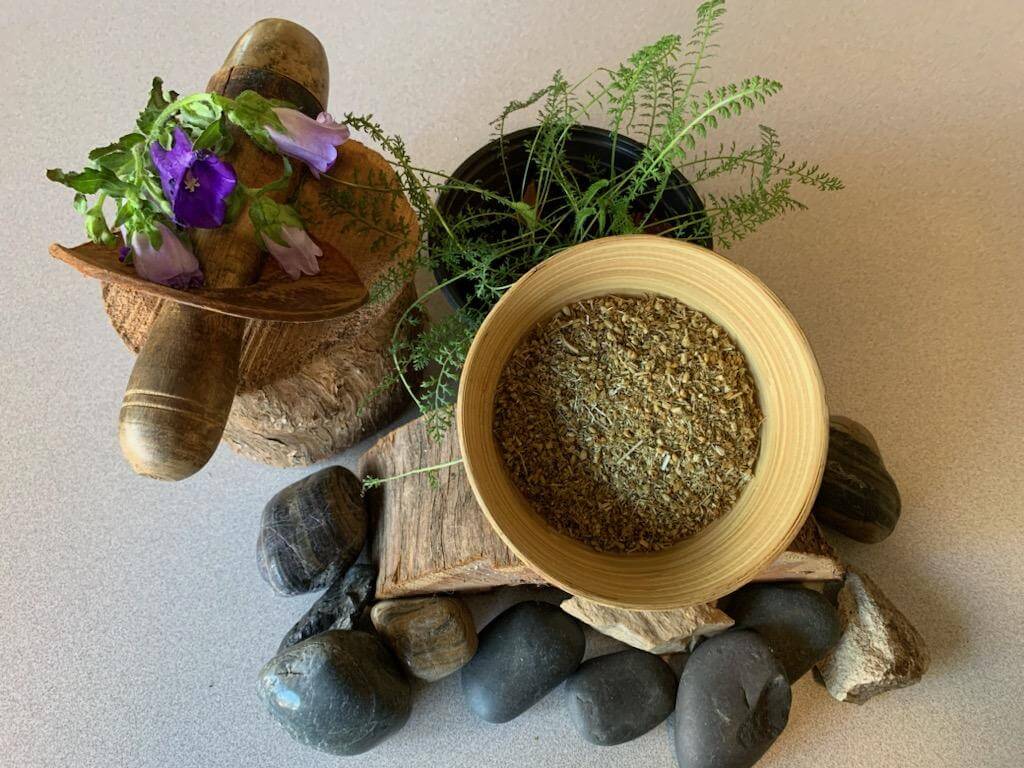
I’d love to hear how these formulas have worked for you!
Heal Hemorrhoids Naturally in 48 Hours
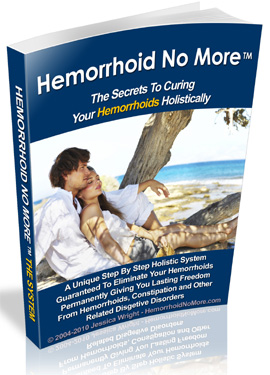
If you have tried "everything" to treat hemorrhoids, including surgery, but it didn’t work—your’re not alone. Jessica Wright experienced this same hardship due to hemorrhoids. But, with extensive research and understanding of natural medicine, she developed a solution to permanently end her hemorrhoids.
Jessica Wright wrote an entire book detailing exactly how to replicate her success. Also, it appears "Jessica Wright" is probably a pen name for a woman—and author—named Linda Allen. Linda suffered from recurrent yeast infections as well, maybe at the same time as she had hemorrhoids. She turned to natural medicine for answers when medical doctors and their solutions could not help.
Jessica’s story is one of severe and chronic hemorrhoids. It involves routine doctor’s visits, prescription medications / creams, significant suffering from hemorrhoids, and even a two hour hemorrhoids surgery (stapled hemorrhoidopexy). Yet, 12 years of these treatments didn’t resolve Jessica’s hemorrhoids.
Despite these setbacks, Jessica didn’t give up; instead, she turned to natural medicine and diligent research. Skipping to the end of Jessica’s story, she would develop a natural method to treat hemorrhoids that worked brilliantly.
After Jessica put together her treatment protocol and used it, she found her hemorrhoids completely disappeared. And, they stayed gone. Something her doctor was not able to do. Yet, all it took was the right natural therapeutic approach.
Jessica also gave her treatment approach to others; and, they experienced the same exceptional results. Typically, Jessica’s system provides dramatic relief of hemorrhoids in just 48 hours. And, the root cause of hemorrhoids is fixed within 30 to 60 days.
A company selling hemorrhoid symptom products does not want their customer base diminished. Consequently, unpatentable natural medicine does not get much attention or publicity.
So, how can you know if Jessica Wright’s claims are legitimate and not a scam? That is a great question. Here are 3 important reasons why Jessica’s book is legitimate:
- It is published by a large U.S. based company (Located in Idaho) known as ClickBank. ClickBank handles all the sales and refunds of many products like Jessica’s. They do business in many countries; and, have been in business for many years.
- ClickBank provides a 60 day, 100% money back guarantee on all their products, Jessica’s book included.
- If you are not satisfied with Jessica’s book you can simply contact ClickBank (they make it very easy) for a full refund.
Jessica’s story is more in-depth than this concise overview. And, there are additional bonuses Jessica provides with her book. If you’d like to find out more about Jessica’s personal story or her hemorrhoid treatment; you can learn more at Jessica Wright’s website.
About the Author
Tricia Streit Perez, MS, CPT is a Clinical Western Herbalist, Certified Flower Essences Practitioner, and a Health and Wellness specialist. Tricia is the owner of Mama’s Essentials and the School Director at Traditions School of Herbal Studies; where she completed her training in Clinical Western Herbalism.
More on Tricia PerezImportant Disclosures & Disclaimers
It is important to use the information you find on Herbsey.com in the right way. Also for legal reasons, these disclaimers and disclosures are necessary. For further information about each, feel free to click the link provided to the page on this website that provides more information.
Medical Disclaimer
The information on this website is not a prescription for anyone. This information is for informational or educational purposes only, and is not a substitute for professional medical advice or consultations with healthcare professionals.
Advertisement Disclosure
Some of the links provided on this article and website are affiliate links. If you purchase a product after clicking on these links, Herbsey.com will earn a commission. Herbsey.com promotes various products through advertisement and text links. For more information: Our Advertisements.



